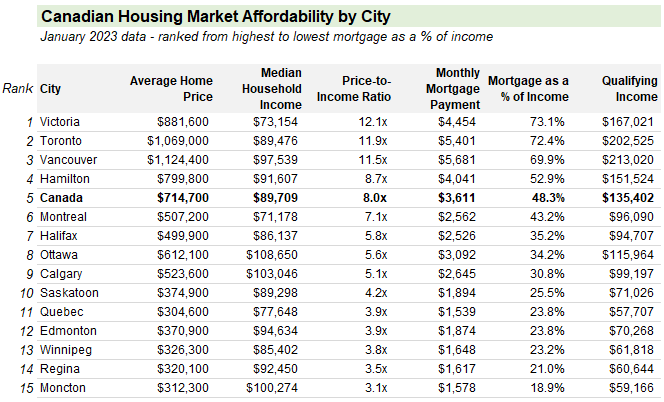lenaitch
Senior Member
Agree, but that just about exactly the opposite of what was said.I think OP's point was that one must be essentially rich these days to afford a detached house whereas before it used to be well within reach for most of the middle class (even the lower middle class). In fact, the first part of your post suggests exactly that.
The average detached house across the city is $1.8m. That suggests a down payment of 360k (about 2.5 times the average down people make); and an annual income of 400k (4 times the average household) to qualify for that mortgage.
I realize this is a Toronto forum, but there's a lot of broad brushing going one when folks refer to any SFH or "city" in general. The whole world isn't Toronto. The rent vs. own equation, including the respective costs of each, can vary widely across the country. A quick review of online data shows that SFHs in many other Canadian cities are comparatively quite reasonable.





